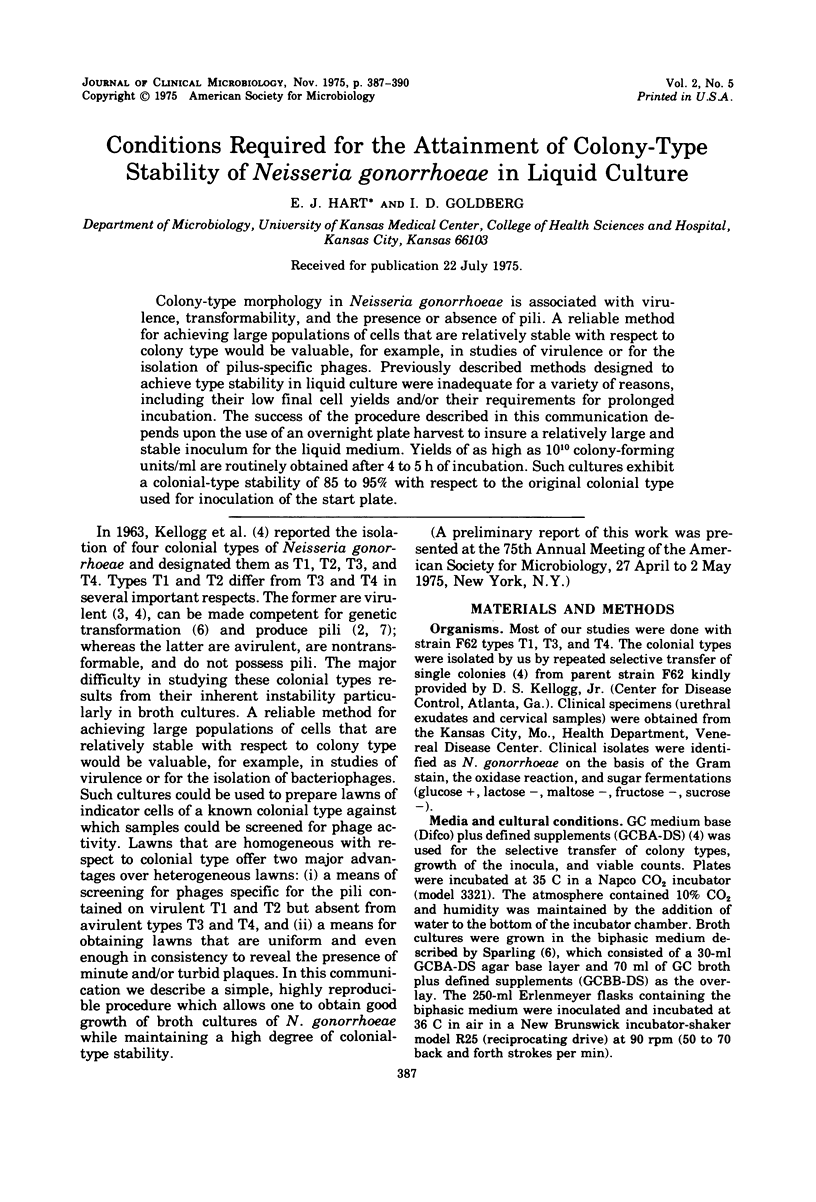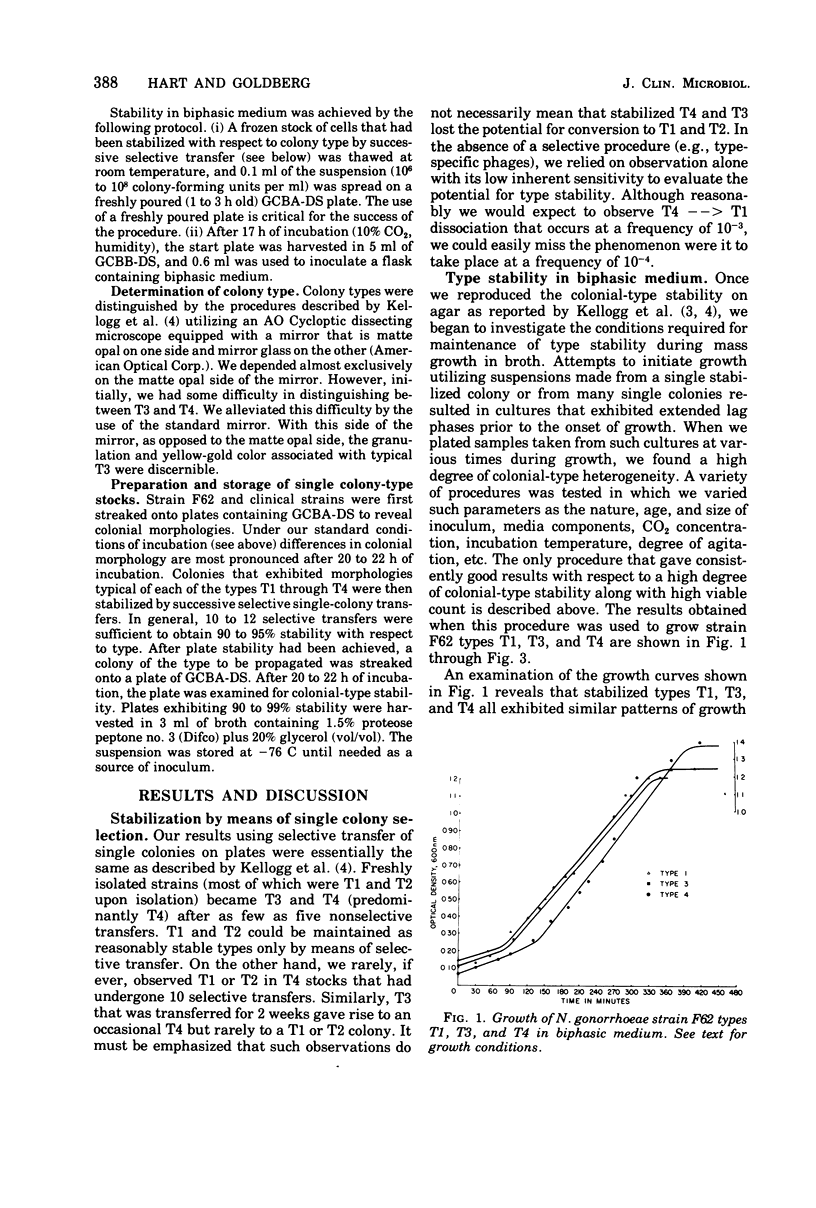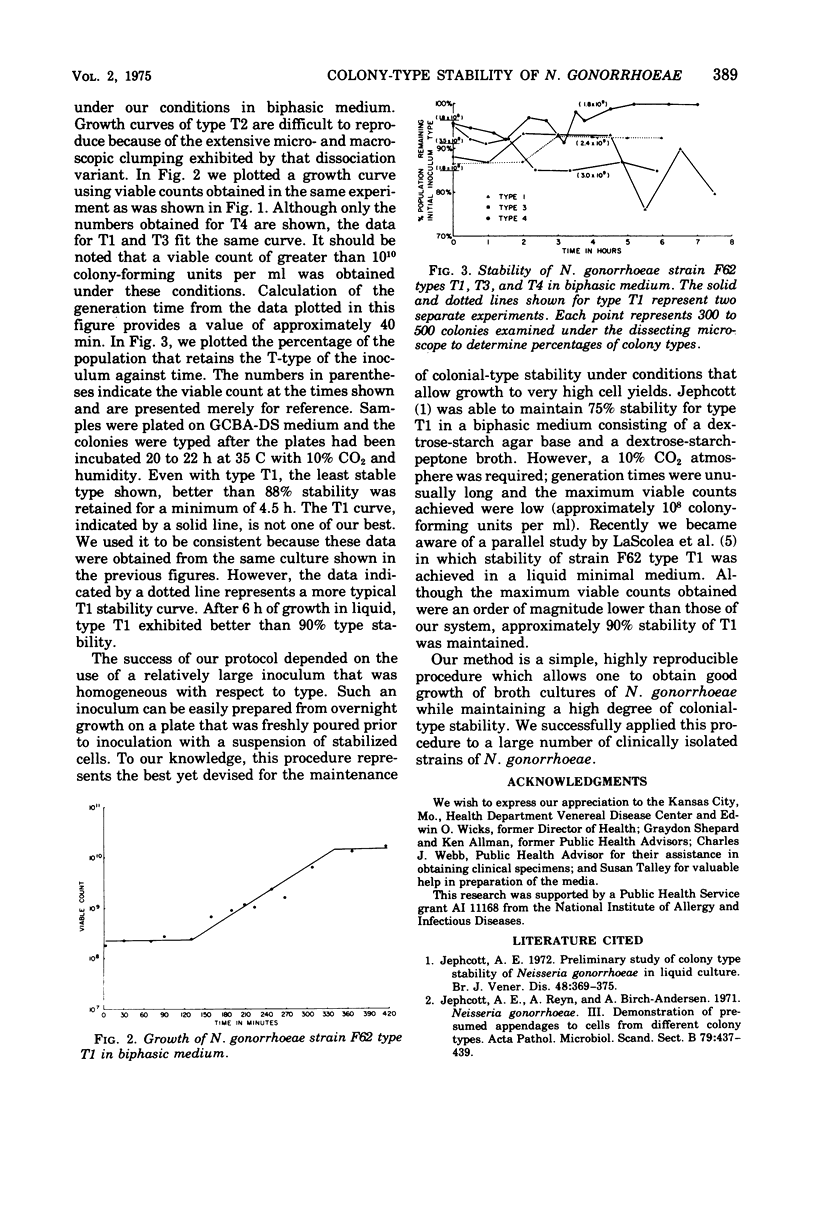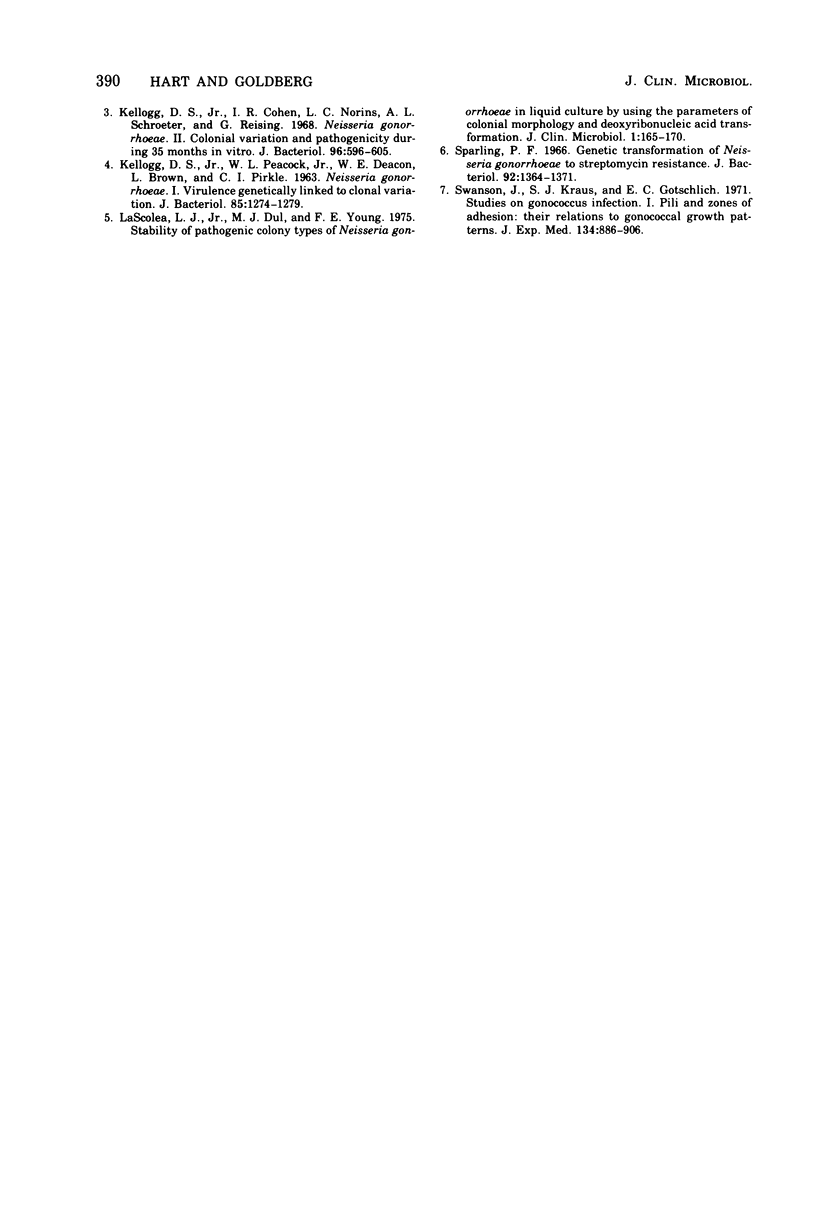Abstract
Colony-type morphology in Neisseria gonorrhoeae is associated with virulence, transformability, and the presence or absence of pili. A reliable method for achieving large populations of cells that are relatively stable with respect to colony type would be valuable, for example, in studies of virulence or for the isolation of pilus-specific phages. Previously described methods designed to achieve type stability in liquid culture were inadequate for a variety of reasons, including their low final cell yields and/or their requirements for prolonged incubation. The success of the procedure described in this communication depends upon the use of an overnight plate harvest to insure a relatively large and stable inoculum for the liquid medium. Yields of as high as 10(10) colony-forming units/ml are routinely obtained after 4 to 5 h of incubation. Such cultures exhibit a colonial-type stability of 85 to 95% with respect to the original colonial type used for inoculation of the start plate.
Full text
PDF



Selected References
These references are in PubMed. This may not be the complete list of references from this article.
- Jephcott A. E. Preliminary study of colony type stability of Neisseria gonorrhoeae in liquid culture. Br J Vener Dis. 1972 Oct;48(5):369–375. doi: 10.1136/sti.48.5.369. [DOI] [PMC free article] [PubMed] [Google Scholar]
- Jephcott A. E., Reyn A., Birch-Andersen A. Neisseria gonorrhoeae 3. Demonstration of presumed appendages to cells from different colony types. Acta Pathol Microbiol Scand B Microbiol Immunol. 1971;79(3):437–439. doi: 10.1111/j.1699-0463.1971.tb00086.x. [DOI] [PubMed] [Google Scholar]
- KELLOGG D. S., Jr, PEACOCK W. L., Jr, DEACON W. E., BROWN L., PIRKLE D. I. NEISSERIA GONORRHOEAE. I. VIRULENCE GENETICALLY LINKED TO CLONAL VARIATION. J Bacteriol. 1963 Jun;85:1274–1279. doi: 10.1128/jb.85.6.1274-1279.1963. [DOI] [PMC free article] [PubMed] [Google Scholar]
- Kellogg D. S., Jr, Cohen I. R., Norins L. C., Schroeter A. L., Reising G. Neisseria gonorrhoeae. II. Colonial variation and pathogenicity during 35 months in vitro. J Bacteriol. 1968 Sep;96(3):596–605. doi: 10.1128/jb.96.3.596-605.1968. [DOI] [PMC free article] [PubMed] [Google Scholar]
- La Scolea L. J., Jr, Dul M. J., Young F. E. Stability of pathogenic colony types of Neisseria gonorrhoeae in liquid culture by using the parameters of colonial morphology and deoxyribonucleic acid transformation. J Clin Microbiol. 1975 Feb;1(2):165–170. doi: 10.1128/jcm.1.2.165-170.1975. [DOI] [PMC free article] [PubMed] [Google Scholar]
- Sparling P. F. Genetic transformation of Neisseria gonorrhoeae to streptomycin resistance. J Bacteriol. 1966 Nov;92(5):1364–1371. doi: 10.1128/jb.92.5.1364-1371.1966. [DOI] [PMC free article] [PubMed] [Google Scholar]
- Swanson J., Kraus S. J., Gotschlich E. C. Studies on gonococcus infection. I. Pili and zones of adhesion: their relation to gonococcal growth patterns. J Exp Med. 1971 Oct 1;134(4):886–906. doi: 10.1084/jem.134.4.886. [DOI] [PMC free article] [PubMed] [Google Scholar]


